With its vivid colors, geometric architecture, and vast natural treasures, Morocco is a feast for the senses. Sun-splashed white walls give way to intricate Zellij tile in the imperial cities while steep gorges and sand dunes provide a study in contrasts across the country. There are so many beautiful places in Morocco!

Contents
- Beautiful Places in Morocco
- 1. Chefchouan
- 2. Sahara Desert
- 3. Hassan II Mosque, Casablanca
- 4. Essaouira
- 5. Ait Ben Haddou
- 6. Marrakesh
- 7. Volubulis
- 8. Bahia Palace
- 9. Todra Gorge
- 10. Ouzud Falls
- 11. Boumalne Dades
- 12. Tizi n’Tichka Pass, High Atlas Mountains
- 13. Fes
- 14. Mausoleum of Mohammed V
- 15. Grand Theater
- 16. Jardin Majorelle
- 17. Rabat
- 18. Ouarzazate
- 19. Meknes
- 20. Ifrane
- 21. Ziz Valley
Beautiful Places in Morocco
I spent two weeks in Morocco crisscrossing this gorgeous country and would head back in a heartbeat!
Morocco is an avalanche of color and patterns. UNESCO World Heritage sites and imperial cities attest to ancient history and multicultural influences.
From the sand to the sea, read on for my favorite places in Morocco…

1. Chefchouan
Known as “The Blue City,” beautiful Chefchouan (pronounced “shef-shoo-awn”) is painted in beautiful shades of blue. It’s a must on any visit to Northern Morocco.
Chefchouan is a small city in the mountains, with under 50,000 residents that was home to Andalusians from southern Spain back in the 15th century, when they were expelled from Andalusia by King Felipe III.
Fast forward to WWII, when Jews emigrated here to escape the Nazis.
They painted the walls of the city blue—which is representative of the sky and the sea in Judaism—in the Jewish part of the medina.
Over time, the color blue came to represent peace and harmony between Moors (the Muslim people of Northern Africa) and Jews living together here.
The striking blue and white-washed walls everywhere are also good for tourism and have only multiplied throughout the town in recent decades.
Chefchouan is everyone’s favorite Instagram spot in Morocco!
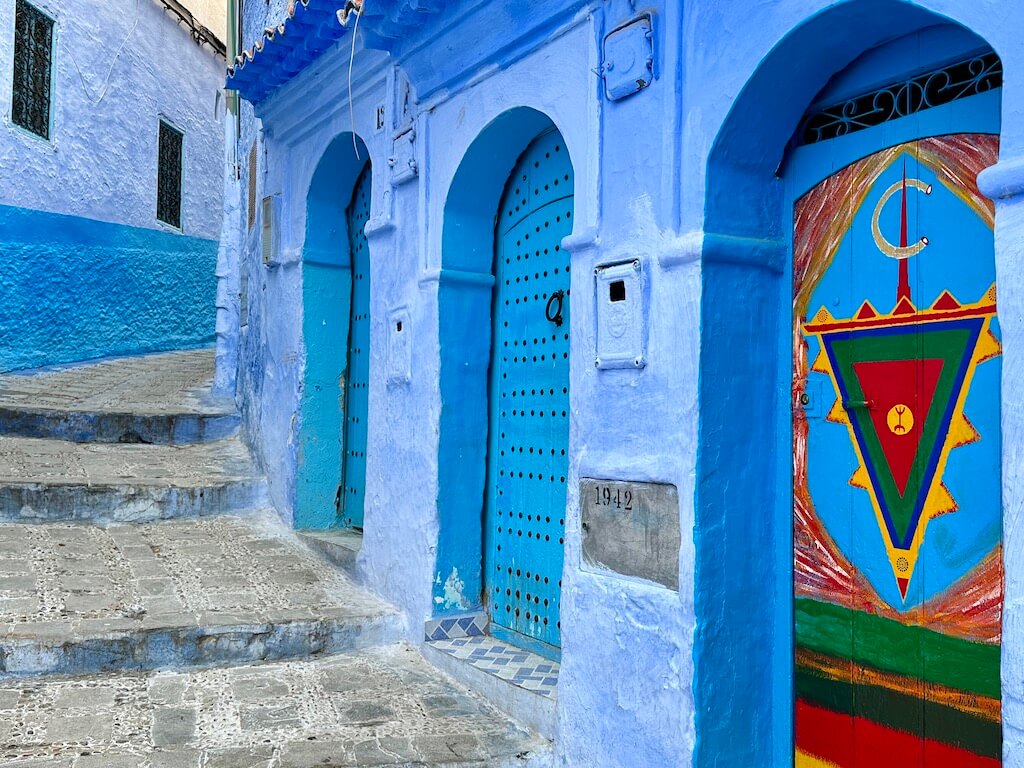
2. Sahara Desert
Did you even go to Morocco if you didn’t visit the famous Sahara Desert? It’s one of my best Morocco travel tips!
You’ll find the world-famous Sahara desert in southern Morocco near Merzouga village on the edge of Erg Chebbi, a veritable sea of picturesque sand dunes that extend 17 miles north to south and three or four miles east to west along the border of Algeria.
Plan on an eight-hour plus drive from Marrakesh to get here. Sure, you can ride a camel closer to Marrakesh but you won’t find sand dunes there!
Merzouga is where the nomadic Amizigh people (known around the world as Berbers) live.
Indigenous to this area, hundreds and hundreds of nomadic families live in temporary tent shelters without electricity or running water.
They move every few months to seek food sources for their goat herds.
Travelers have it easier though!
Ride a camel for an hour or two and you’ll feel lost in time listening to the wind and sand around you.
At last you’ll arrive in a luxury desert tent camp with a comfortable bed and gourmet meal.
Be aware that the desert is *cold* in winter at night though and *hot* in summer.
Best time to visit for moderate weather is spring and fall.
Sleep out under the stars or wake early for a magical desert sunrise.
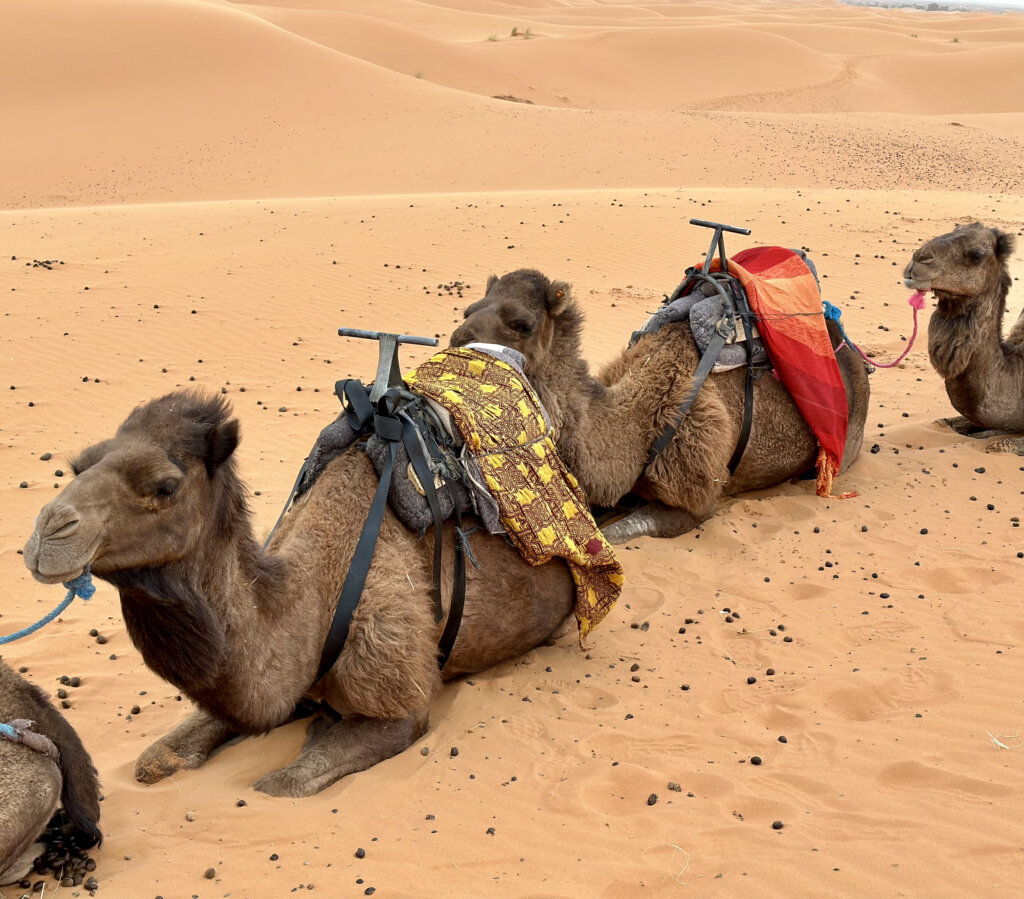
3. Hassan II Mosque, Casablanca
One of the largest mosques in the world, the Hassan II Mosque in Casablanca is also the largest functioning mosque in Africa.
Nestled up against the shore of the Atlantic Sea, this beautiful mosque was assembled by 12,500 workers in just six years!
Commissioned by King Hassan II, it was a collaboration between a French architectural firm and Moroccan craftsmen in 1986 and inaugurated in 1993.
The construction was financed—all $750 million—partly by the King and partly by ordinary Moroccans who were required to pay a minimum amount or more if they were so inclined.
Today, during Ramadan, more than 25,000 people come to pray daily inside the mosque, with another 80,000 in the large courtyard outside.
It’s also the only mosque in Morocco—there are 55,000 mosques in the country—that allows non-Muslims to visit. It’s an extraordinary experience!
Read more on beautiful places around the world:
• 37 Most Scenic Places in Ireland
• 16 Prettiest Cities in Spain
• 11 Beautiful Places to Visit in Washington State, USA
4. Essaouira
Do you think of romantic seaside villages when you think of Morocco?
Morocco is more than its famous Sahara Desert and imperial cities…and Essaouira (pronounced “Ess-WEER-uh”) is proof of that.
Known by the name of Mogador until the 1960s, Essaouira is a scenic fishing village located a few hours from Marrakesh on Morocco’s north Atlantic coast.
Essaouira was a Roman trading post back in 5th century BC.
And if you go even further back—to the end of the first century BCE—you’ll find 3,000 years of inspiration for the bright blue wooden fishing boats that still huddle in the harbor here.
It’s known as Tyrian purple, a rare and expensive pigment sought throughout the ancient world.
The Berber King Juba II established a Tyrian purple dye factory by processing murex and purpura shells found in the rocks here.
This dye even colored the stripe in the togas of Roman VIPs back in the day.
Aside from its bustling harbor, Essouira is a popular place for a seaside vacation for travelers, expats and especially with Moroccans during Ramadan.

5. Ait Ben Haddou
Ait Ben Haddou, a UNESCO recognized ksar (or “fortified village”) makes a memorable day trip from Marrakesh.
Located in the High Atlas Mountains in Ouarzazate, it’s a striking sight.
Ait Ben Haddou has been fortified since the 11th century, strategically built along an important trans-Saharan caravan route where traders came to trade spices, gold, and even African slaves.
It dominated the valley here and still does today, with its rich red mud plaster architecture.
Dwellings are comprised of earth and mud, mixed with straw, although upper floors taller buildings were made of light adobe.
Ait Ben Haddou has been well maintained and restored over the years, particularly as it’s a popular Hollywood film set.
You’ll find a defensive wall and enter a gate as you meander through a jumble of tightly clustered dwellings.
There’s a mosque, a granary, a kasbah, and a caravanseri—where roadside travelers rested—here.
You’ll also find plenty of artisans and rug sellers still selling their wares in boutiques here today as well.
6. Marrakesh
Marrakesh is one of Morocco’s four imperial cities.
It’s known as “the Ochre City”— due to the red walls around the city, which were constructed in red sandstone back in the 12th century.
Marrakesh is a fascinating mix of Berber, Islamic, and French culture…a study in contrast between wide tangerine-lined boulevards, art deco buildings, and ancient UNESCO World Heritage sites.
The best way to appreciate the diverse beauty here is to head directly into the medina and wind your way into the maze of remote alleyways that define the many Marrakech souks—or markets—here.
Colorful rugs, leather goods, mountains of spices, and gilded lamps will catch your eye at every turn.
Be sure to also visit Koutoubia Mosque and famous Bahia Palace, filled with stunning stuccos, paintings, and tile mosaics.
Whatever you do, plan for sunset at one of the many picturesque rooftop bars here.
Whether you’re enjoying a unique cocktail or sipping mint tea like the locals, it’s the best way to end a day in Marrakesh!
7. Volubulis
Did you know the Romans were in Northern Africa?
Volubulis, near Meknes, began as a Berber settlement around the third century BC and was an important outpost of the Roman Empire.
Volubilis stands on a ridge above a remote valley and lay within the kingdom of Mauritania, a Roman state after the fall of Carthage in 146 BC.
This was a wealthy, prosperous area due to its fertile lands and exports of grain and olives. At its xenith, Volubulis had 20,000 residents.
An earthquake in the 18th century devastated the ruins here and then Moroccan rulers looted the site for stone to build nearby Meknes.
Nevertheless, eventually half of the site was excavated, revealing impressive remnants of luxurious Roman villas and public houses with detailed tile mosaic floors, arches, walls, and more.
It’s an incredible experience to walk this archaeological wonder today…particularly as you’ll find just a handful of other visitors here!

8. Bahia Palace
Bahia Palace is one of the most beautiful places to visit in Morocco and must not be missed!
Dating from the end of the 19th century, Bahia Palace was first built for Si Moussa, grand vizir of the sultan who descended from a family of black slaves as he grew in power. He named the palace for his favorite wife.
The palace was expanded over time which accounts for its labyrinth like layout, without a clear central structure. A small inner courtyard is surrounded by ornate chambers.
If you’re a lover of Moroccan tile, you’ll find Bahia Palace is one of the most ornate examples of this artistry anywhere.
Zellij tile mosaics encircle Arabic inscriptions in stucco with marble floors and vivid floral patterns in cedar wood ceilings. It’s one-of-a-kind craftsmanship.
A two-acre garden opens onto courtyards here.
9. Todra Gorge
Todra Gorge is a natural oasis carved deep into the High Atlas Mountains.
These limestone canyons with a river running between them are some of the world’s most spectacular canyons anywhere.
Actually, it reminded me a lot of the steep cliffs of Zion National Park in Utah as the sun glinted off the incredibly sheer canyon walls.
It’s the perfect place to stretch your legs and browse the roadside handicrafts on your way south to the Sahara Desert from Marrakesh to the north.
You’ll find Todras Gorge to be about a seven-hour drive.

10. Ouzud Falls
A popular day trip from Marrakesh, Ouzud Falls make the perfect escape into stunning nature.
We had to cancel our trip to Ouzud Falls due to rain on our Morocco visit but look forward to seeing this gorgeous falls next time!
You’ll find Ouzoud Falls near the Middle Atlast village of Tanaghmeilt, about a 2.5-hour drive northeast of Marrakesh.
You’ll park in Ouzoud and then hike for about one hour to the bottom of the falls. These falls are the second tallest waterfall on the African continent!
Expect crowds if you visit in summer… especially due to swimmers. Winter is a great time to visit for fewer tourists and more abundant water flow.
11. Boumalne Dades
The beautiful Dades region in southeast Morocco is home to rose fields—visit the Rose Valley in April and May for pink blooms— where locals sell rose oil and rose water.
You’ll also find historic kasbah and the picturesque Todra Gorge here (see #9 above).
The Dades River cuts through the arid landscape here. The main city here? Boumalne Dades, a smallish settlement at the edge of the desert plateau.
Boumaln Dades makes the perfect place for a scenic overnight if traveling between Merzouga in the Sahara Desert and Marrakesh to the north. The name means “place of business and trade”.
This area is home to Berbers as well as other indigenous tribes. You’ll find lots of sun-dried mud houses built in the traditional Berber architecture style here.
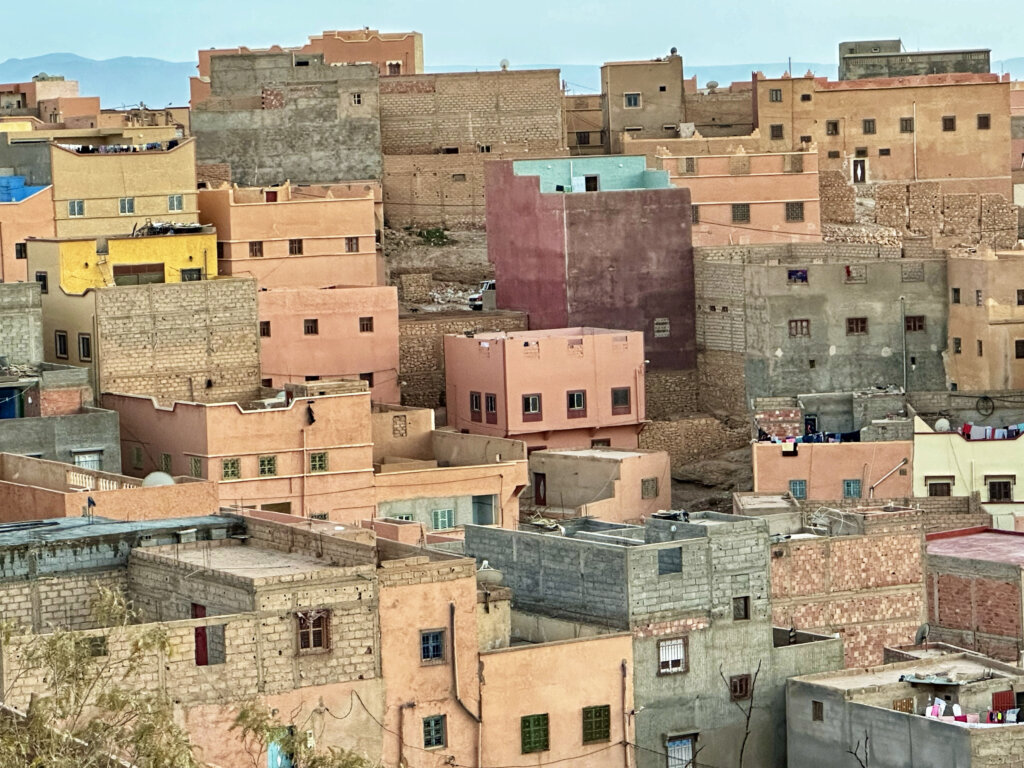
12. Tizi n’Tichka Pass, High Atlas Mountains
The awe-inspiring Tizi n’Tichka Pass in the High Atlas Mountains links Marrakesh to the city of Ouarzazat and is a gateway to the Sahara Desert.
Just days after we passed through here, this pass was closed for days due to snowfall! That’s perhaps not surprising since the elevation here is 7,415 feet above sea level.
This is a truly spectacular drive as you wind your way ever up, up, up for phenomenal panoramic views of fertile valleys and farming plains.
There are an endless series of hairpin turns here so beware if you struggle with car sickness.
Most surprising of all is the number of enterprising souvenir sellers you’ll find in remote locations here at scenic turnouts…in what seems like the middle of nowhere!

13. Fes
As the cultural capital of Morocco, Fes in northern Morocco is the oldest town in the country.
Its fascinating labyrinth of a walled medina, filled with colorful souks, must not be missed.
As a UNESCO World Heritage site, the medina includes 9,000 alleyways and is home to 200,000 residents as a car-free zone.
Founded in the ninth century, Fes grew in the 12th and 13th centuries and is considered one of the best-preserved towns of the Arab world.
Be sure to see The Royal Palace of the King (Dar al-Makhzen) with its beautiful golden brass doors and Islamic architecture.
Check out the distinctive balconies in the Jewish neighborhood next to the palace while you’re here, too.
Perhaps most famous of all in Fes is the Chouara Tannery in the medina with its stone vats full of colored dyes and liquids for cow, sheep, goat, and camel hides.
Fes is the place to bargain for famous Moroccan leather goods!
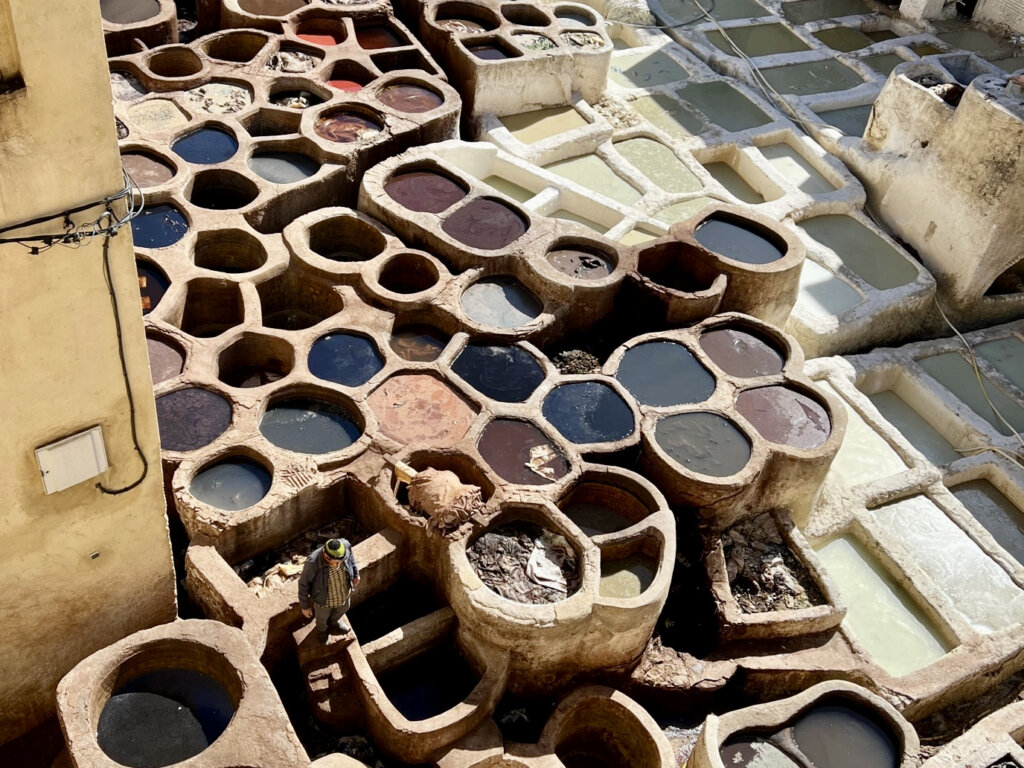
14. Mausoleum of Mohammed V
Just across from the famous Hassan II Tower in Rabat is the architectural marvel of the Mausoleum of Mohammed V.
It contains the tombs of Mohammed V, King of Morocco, as well as his two sons, the late King Hassan II and Prince Abdallah. It was completed in 1971, when Mohammed V’s body was transferred here.
You’ll find the mausoleum on an elevated platform with white marble on the exterior in the southeastern corner of the esplanade. Moorish arches and a green pyramid roof complete the building.
Inside, the mausoleum is covered by a mahogany wood dome with colored glass and zellij Moroccan tile.
It’s a beautiful sight to behold.

15. Grand Theater
You have to see the largest theater in Africa, don’t you?
This incredible structure has been under construction since 2014 and is scheduled for completion in summer of 2023.
Designed by Iraqi-British architect Zaha Hadid before her death in 2016, it’s a sight to behold.
You can’t enter it yet but it’s a striking structure to see from the highway or while visiting the Hassan Tower and Mohammed Mausoleum.
Seeing this sleek modern structure in person might challenge some of your perceptions about Moroccan architecture.

16. Jardin Majorelle
With limited time and lots of rain during our time in Marrakesh, we didn’t make it to Jardin Majorelle so it’s on my list for a next visit!
At nearly a half acre in size, Jardin Majorelle is a botanical garden and artist’s landscape garden, created by French artist Jacques Majorelle starting in 1923 and over the next 40 years.
Majorelle was a celebrated Orientalist painter who fell in love with the vivid tile colors of Marrakesh.
He used a special shade of bright cobalt blue extensively throughout his garden and buildings here.
In fact, he patented the name of this color—”Bleu Majorelle”—before his death.
Today, Jardin Majorelle is an Insta-famous color-saturated sanctuary with unique outdoor spaces and water features.
You’ll need to secure an online ticket before visiting, however.
Just be aware the garden is rather small and you’ll likely face a long queue to get in.

17. Rabat
Along with Fes, Marrakesh, and Meknes, Morocco’s current capital of Rabat makes up one of the country’s four imperial (historical) cities.
Each of these cities has served as a Moroccan capital at some point in its history.
The capital of Morocco was moved from Fes to Rabat back in 1912. And then, after Morocco earned its independence from France in 1956, it was decided was to retain Rabat as capitol.
While tourists tend to pass over Rabat in favor of beautiful places like Chefchouan and Marrakesh, Rabat is a beautiful place to visit in its own right due to its unique sights.
The Hassan Tower—conveniently located next to the Mausoleum of Mohammad V (#14 above)—was intended to be the tallest minaret and mosque in the world but was left forever unfinished after the Sultan died suddenly at the beginning of the 12th century.
The Kasbah des Oudaias is a remarkable restored medieval fort at the confluence of the Bouregreg River and Atlantic Ocean here.
And finally, it’s hard to miss the Mohammed VI Tower in nearby Salé soaring into the air with its 55 stories!
The structure includes a luxury hotel, apartments, and a viewing terrace at the very top!
18. Ouarzazate
Known as the “Hollywood of Morocco,” Ouarzazate is another beautiful place to visit in the High Atlas Mountains.
Morocco has been inviting film studios from around the world to shoot on location here since the 1950s.
More recently, Game of Thrones was filmed here in 2012 for Season 3, when Daenerys unleashes the fury of her dragons for the first time.
Film lovers can tour Atlas Studios here for the full experience.
You’ll also see the characteristic Berber mud houses here that seem almost to melt into the arid orange desert landscape.

19. Meknes
Meknes is yet another of Morocco’s imperial cities. It was founded in the 11th century as a military settlement and later became a city famous for its Spanish-Moorish architecture.
The city’s name, “Meknes”, derives from the Berber tribe “Meknassa” who dominated eastern Morocco back in the eighth century.
I wasn’t able to tour Meknes myself during our recent trip to Morocco as key sights were unfortunately closed for renovation.
One of the main attractions here though is Bab el-Mansour with its 18th-century gate glittering with green and white zellij tiles and marble columns.
I hear that the Dar Jamai Museum, a 19th-century palace, has a dazzling interior of painted wood, carved stucco, and zellij mosaic tilework.
Next time!

20. Ifrane
Ifrane, which holds the record for the lowest temperature ever observed in Africa (in 1935) is known as Morocco’s “Little Switzerland.”
You’ll find this resort town in the Middle Atlas region of Northern Morocco.
It’s a popular vacation spot for Moroccans looking to escape sweltering tempers in Fes and other cities in summer
Known for its alpine-style architecture, alpine forests, and ski slopes, Ifrane is also famous for its royal palace and prestigious Al Akhawayan University, one of the top public universities in Morocco.
While you’re here, make a stop to look for the wild monkeys that live in the cedar forest here.
They were elsewhere on our stop in town but are frequently spotted!
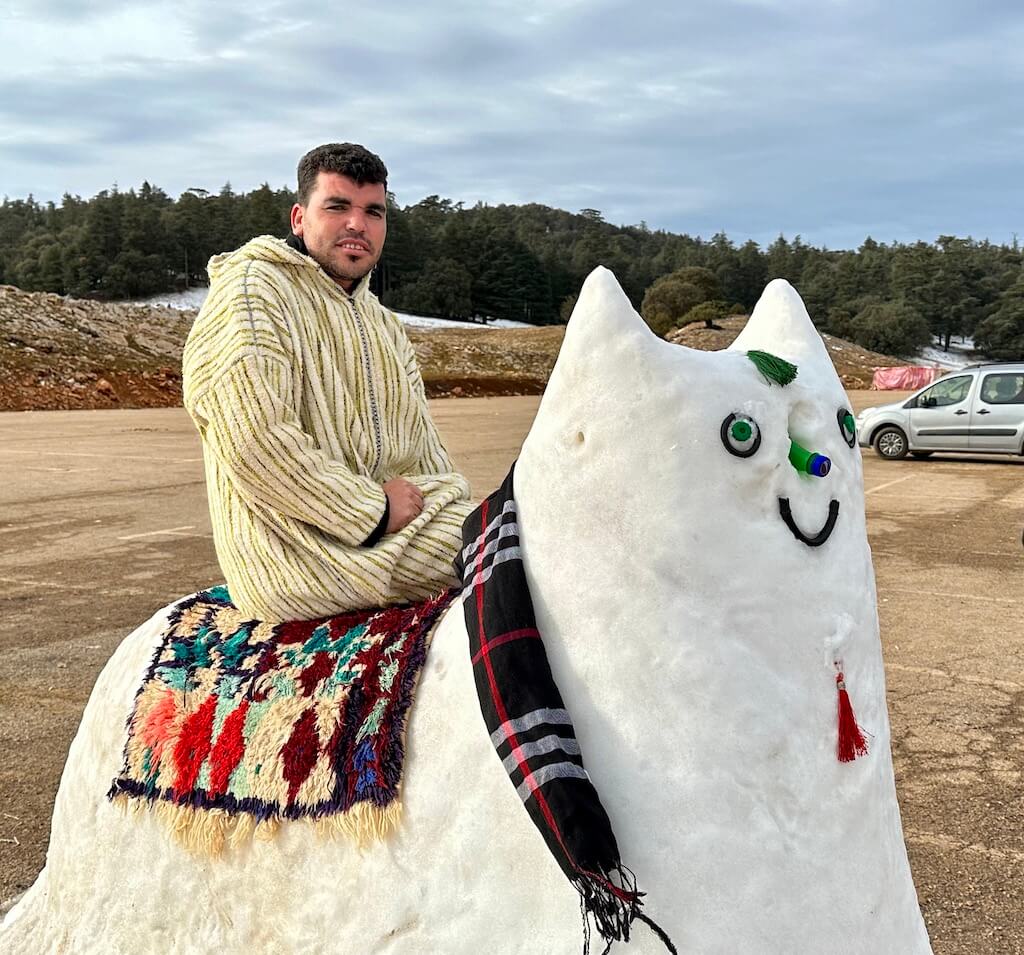
21. Ziz Valley
The scenic Ziz Valley is one of the last major sites before the ochre-colored cliffs give way to the undulating sand dunes of Merzouga in southern Morocco.
The Ziz Gorge is impressive with wide panoramas across its limestone cliffs in every direction and the Ziz River far below.
There’s a dam here too, Hassan Al-Dakhil, which sometimes has turquoise water.
Eventually, you’ll arrive in the oasis of Erfoud with its abundant Aoufous palm trees along the river. It’s a spectacular site.
Even though it may look arid and inhospitable to life at first glance, the beautiful Ziz Valley grows fruit trees, cumin, grains, alfalfa, and more here thanks to the wonders of irrigation.
It’s also dotted with groves of date palms, figs, olives, and pomegranates.

Like this post? Pin it to save it for later!


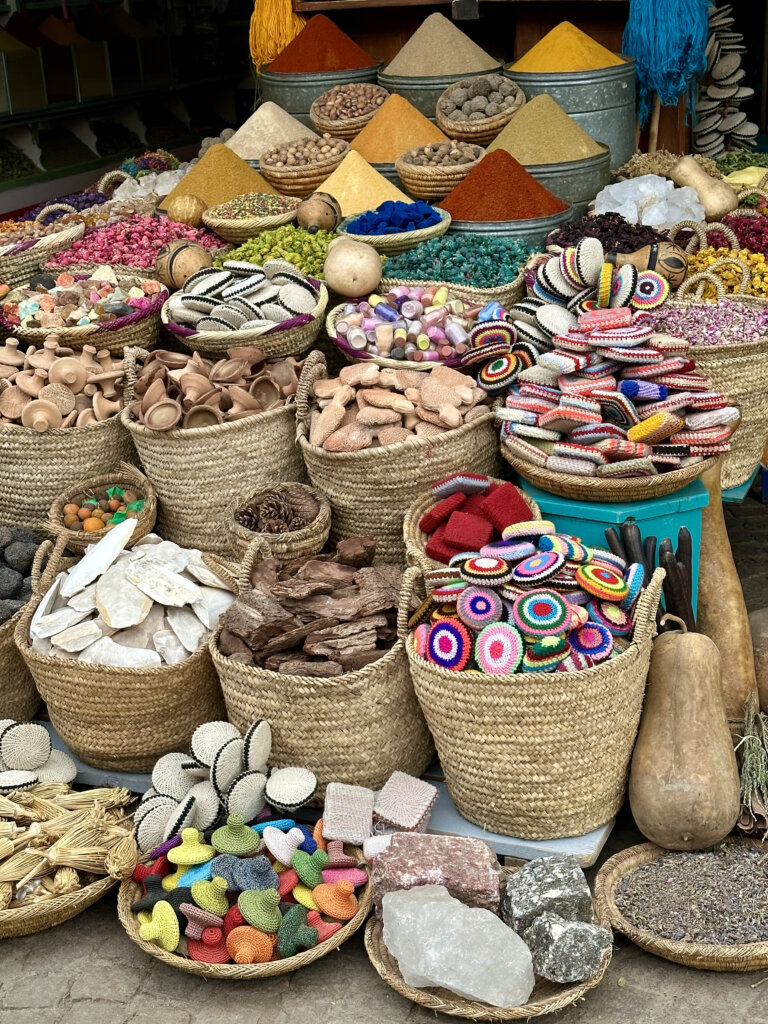
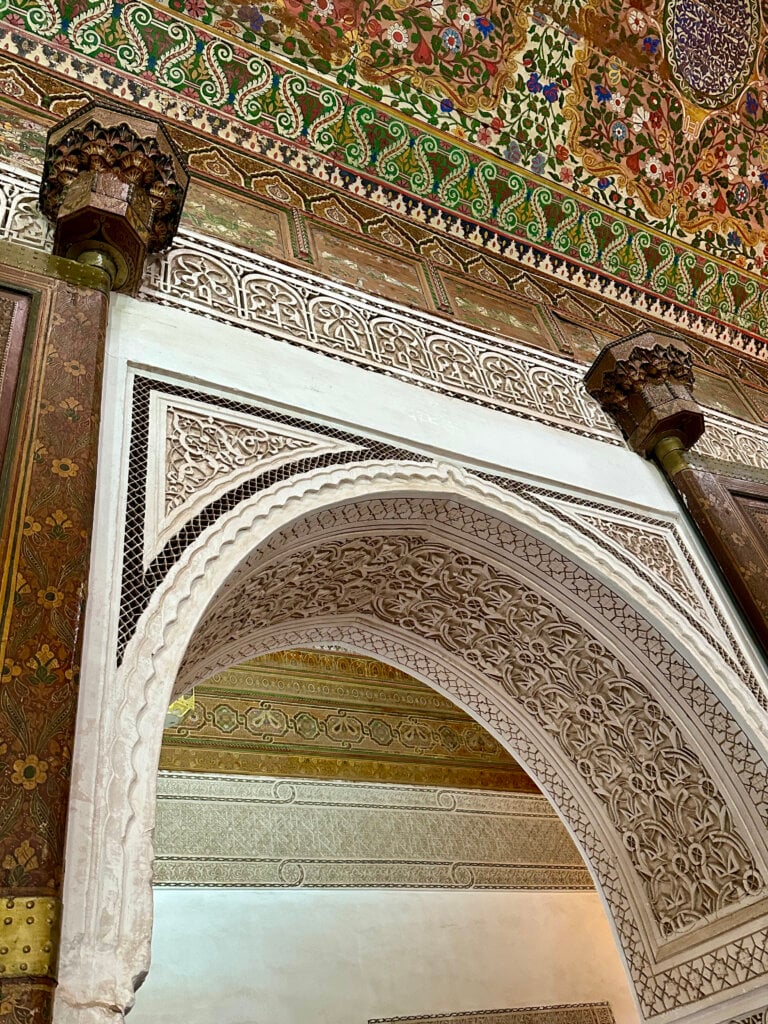



Leave a Reply